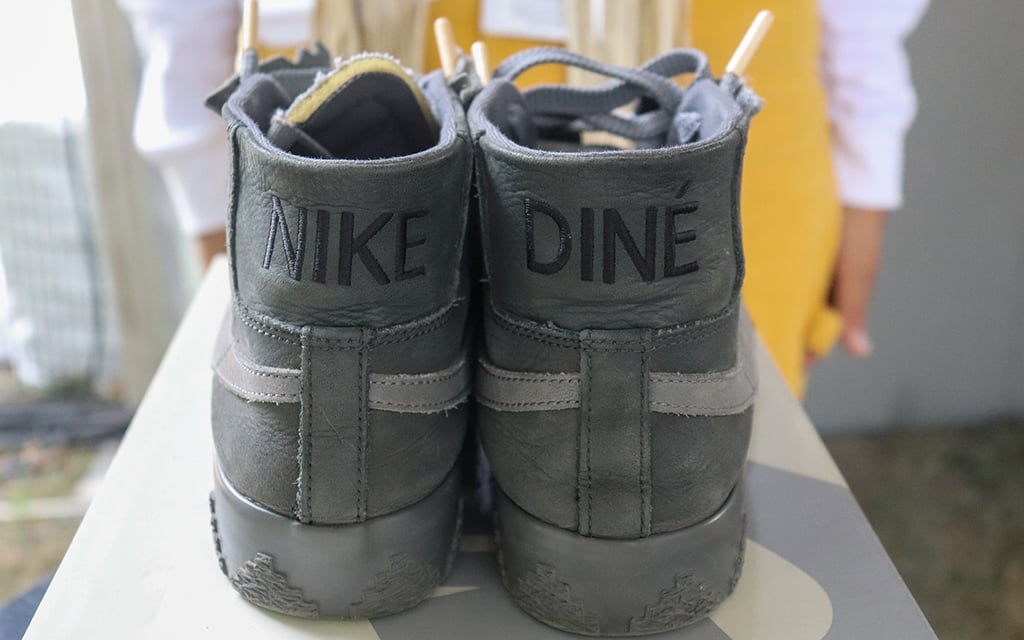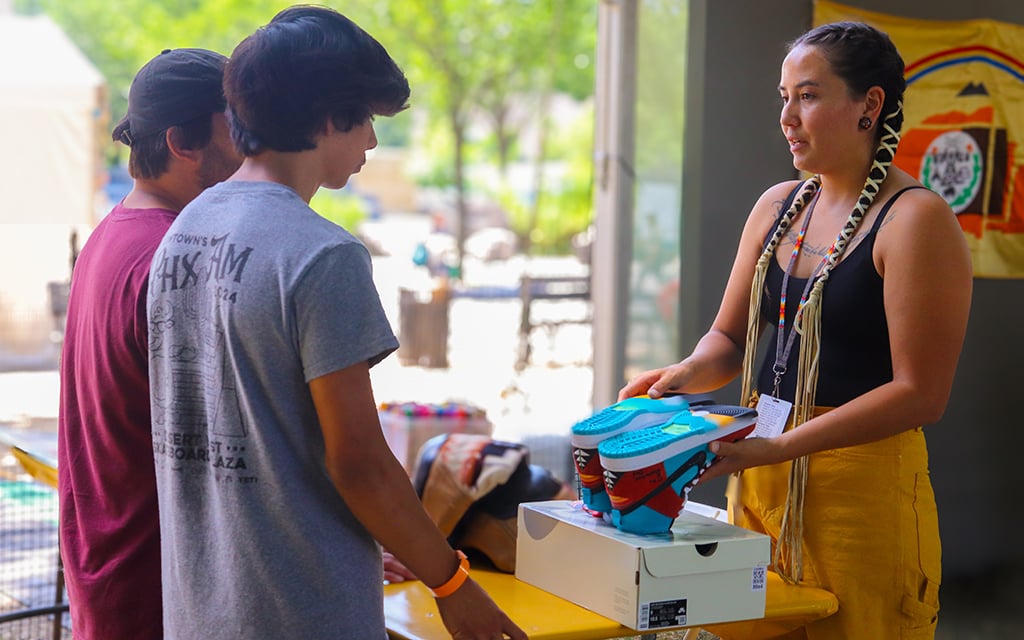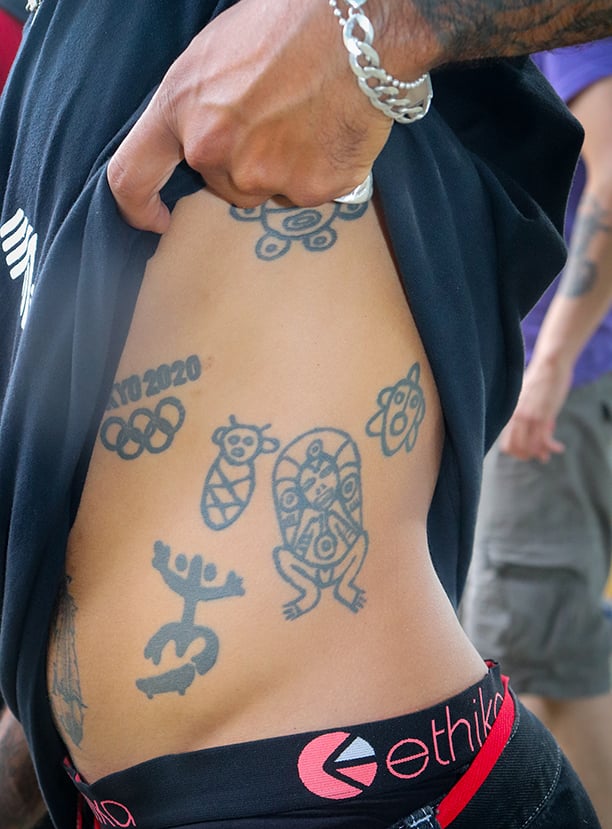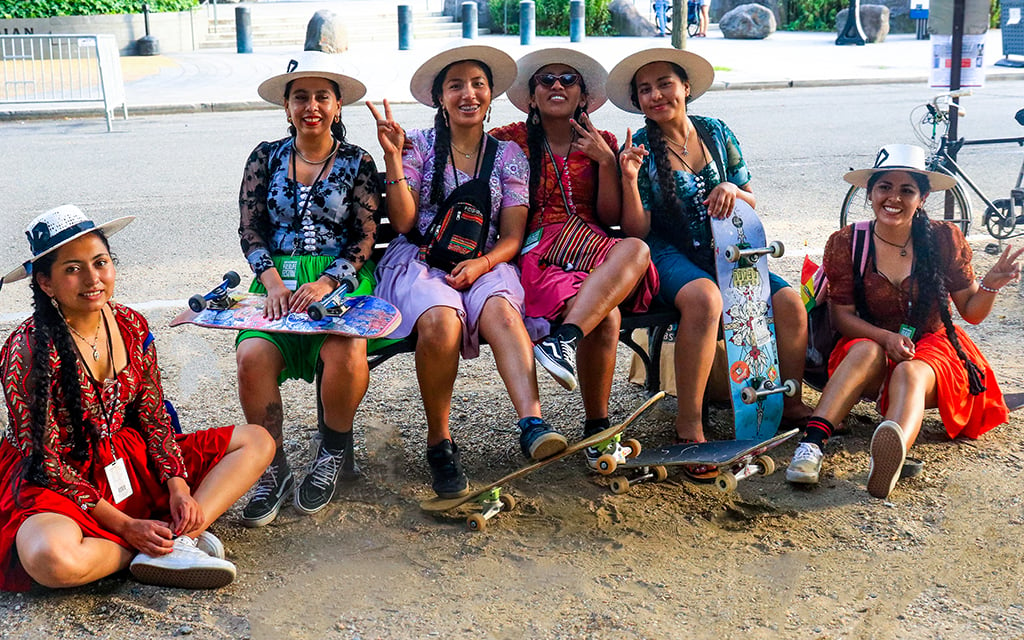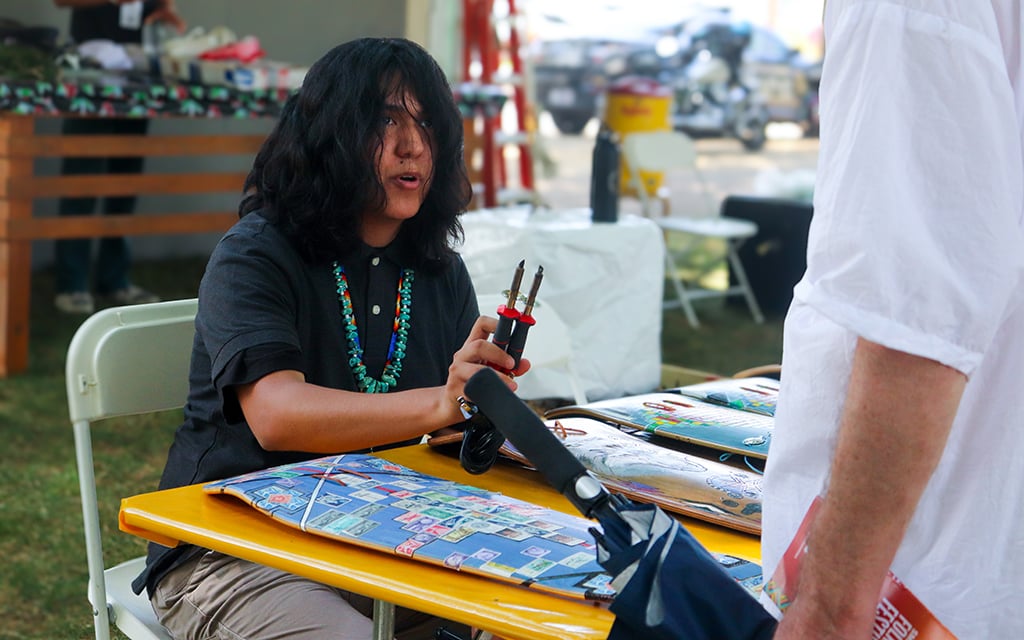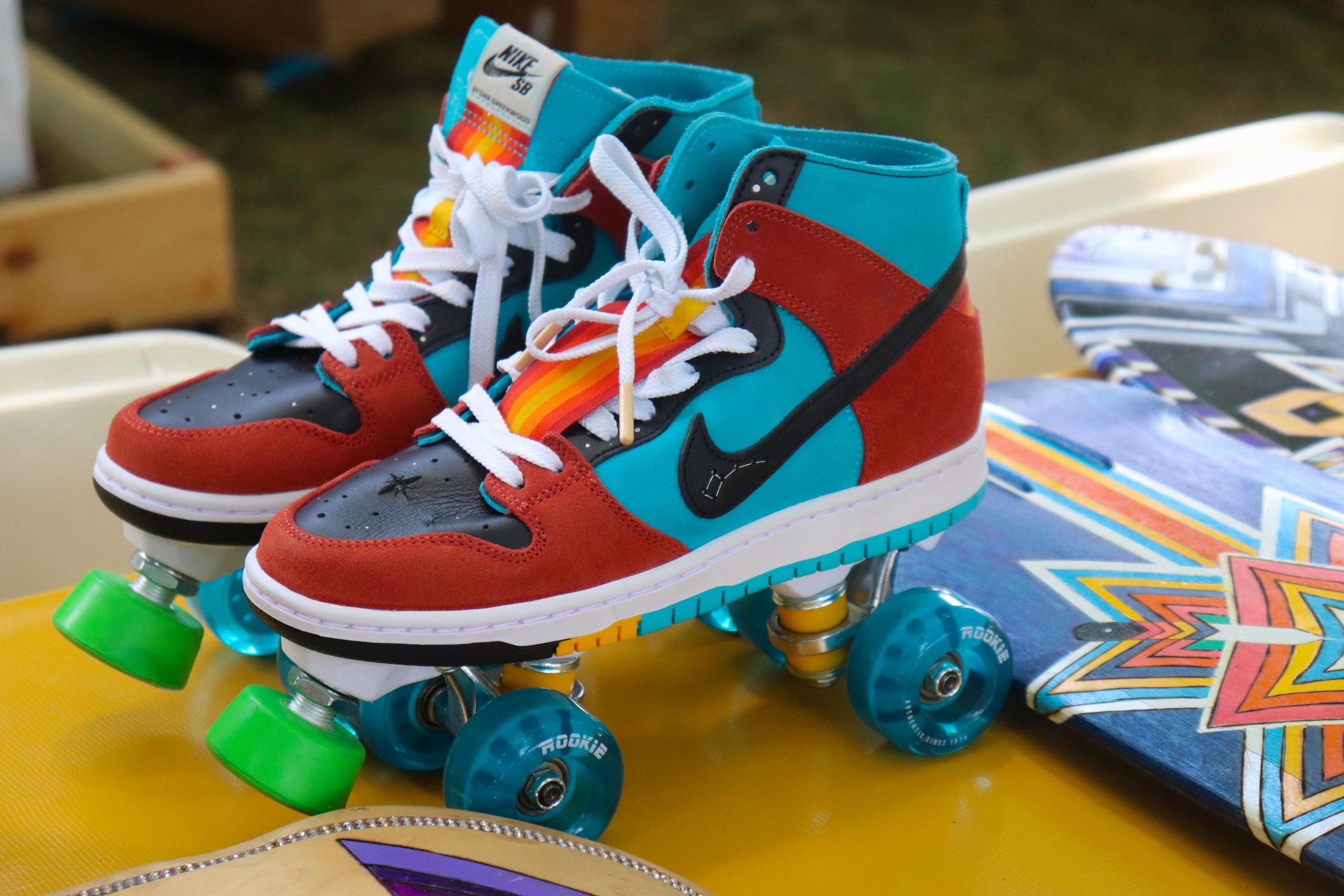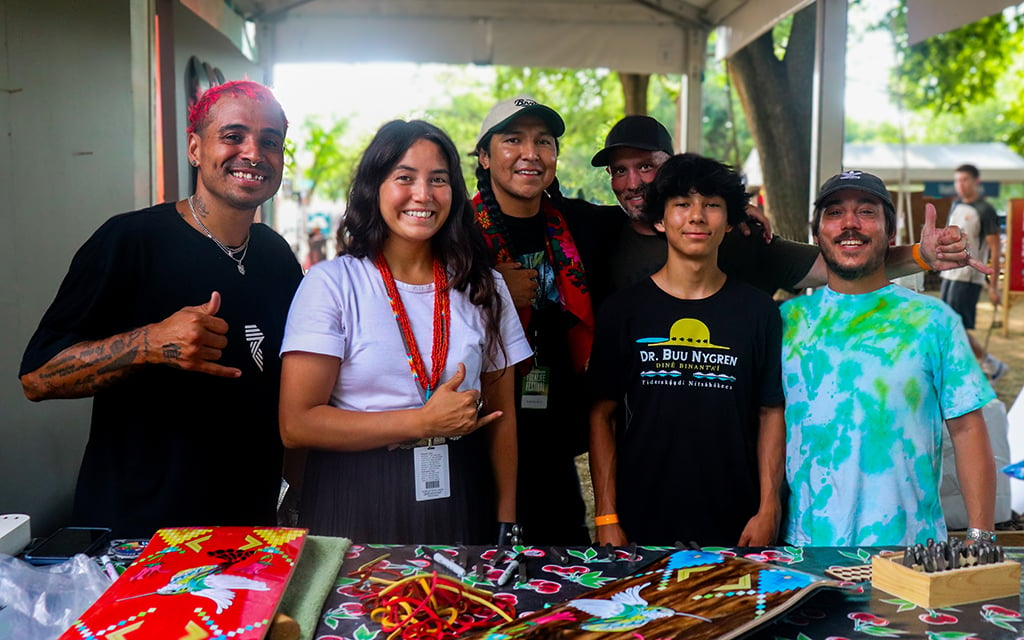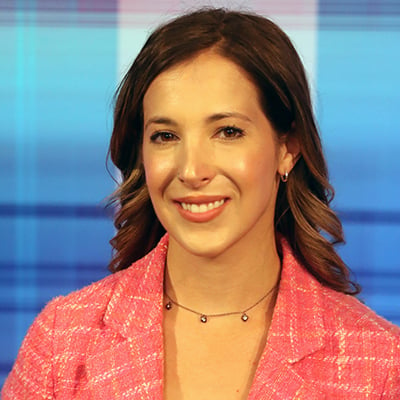Skateboarding gives Navajo and other Indigenous people an outlet for artistry and heritage
Skateboarding gives Navajo and other Indigenous people an outlet for artistry and heritage
Skateboarders from the Navajo Nation and other Indigenous groups “shredded it” at the Smithsonian Folklife Festival. The sport has proven to be an outlet for artistry and heritage.
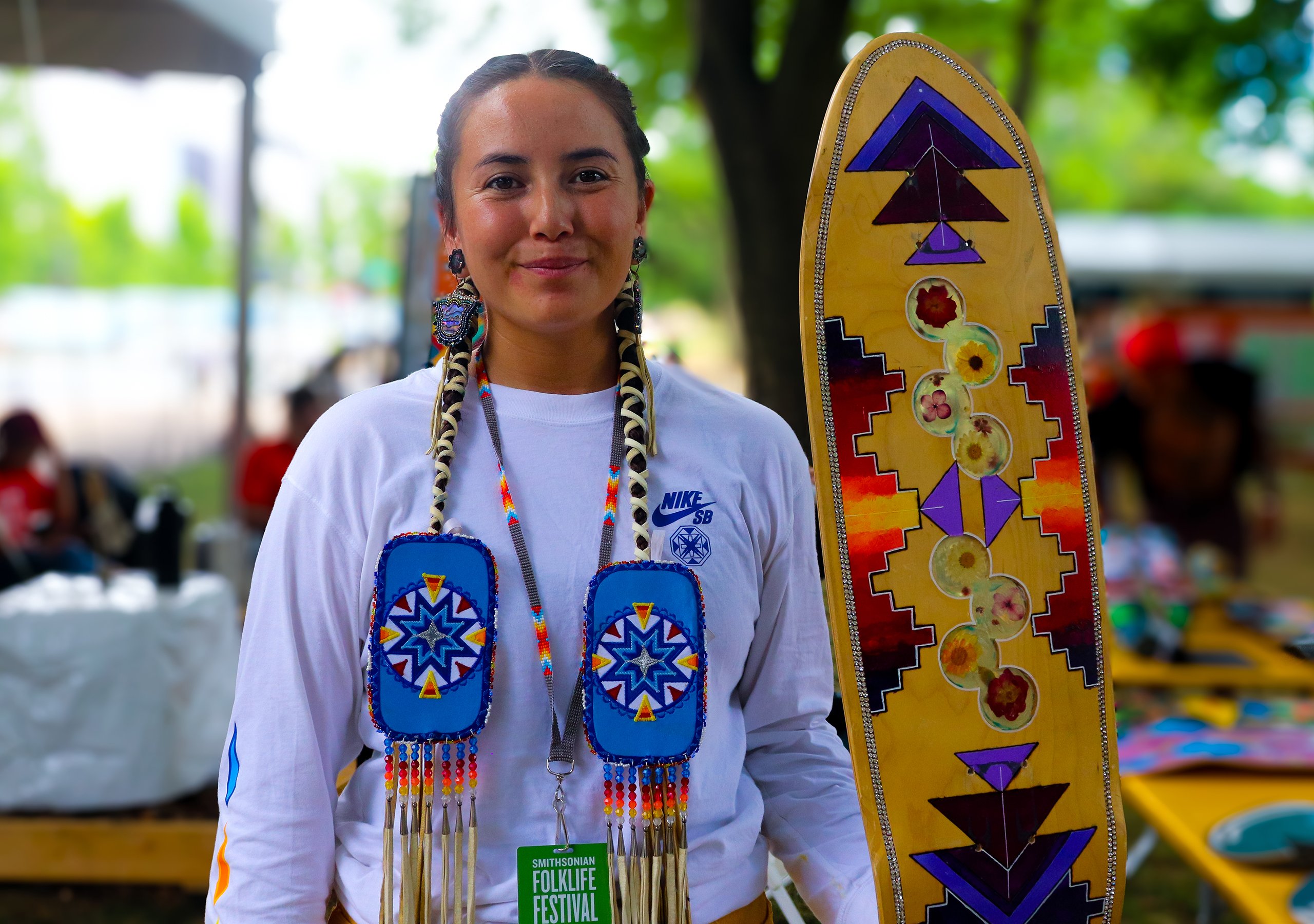
Di’Orr Greenwood with one of her handcrafted skateboards at the Smithsonian Folklife Festival in Washington, D.C., June 24, 2024. (Photo by Brianna Chappie/Cronkite News)


